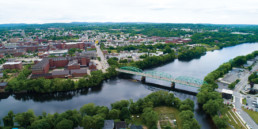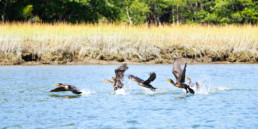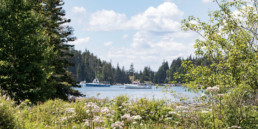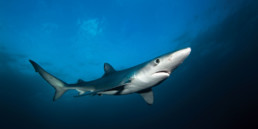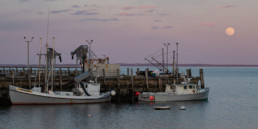Arctic Observations
By Peter Ralston
Last summer, photographer and Island Institute co-founder Peter Ralston boarded a friend’s yacht just above the Arctic Circle on the west coast of Greenland to explore that area, as well as the heart of the high Canadian Arctic archipelago. It was the trip of a lifetime among some of the world’s most remote islands, offering a front-row seat in the planet’s most dramatic theatre of rapid climate change.

After our first stop in Greenland at Qassiarsuk, where the temperature on July 25 was a near-record 72˚F, SY Rosehearty visited a couple of Greenland’s smaller ports before dropping the hook off Ilulissat, home of the northern hemisphere’s fastest moving glacier, the Jakobshavn. Our proximity to Big Ice here set the stage for our upcoming month of constant exposure to unexpected indicators of climate change.
Ilulissat is Greenland’s third largest city, population 4,600. Shrimp, cod, halibut, salmon and seal fishing are important here, but eco-tourism is now the biggest business. There’s a UNESCO World Heritage site here which caters to those who come to see the ice….while it’s still here. Although the beauty is nearly overwhelming, what might otherwise be a festive air is undermined by a low-key vibe of eco-tragedy.
Just in the past 15 years the Jakobshavn glacier’s face has retreated more than it did in the previous century; since the 1990s the Jakobshavn has nearly tripled its flow rate and now annually averages something like 6 feet an hour.
Just in the past four years, more than a trillion tons of ice have been lost here. This is 400 million Olympic swimming pools’ worth of water, or enough to fill a single pool the size of New York State to a depth of 23 feet. Even though this particular ice drainage basin is smaller than the one in Greenland’s northeast, there’s enough ice in it alone to raise global sea levels by two feet.
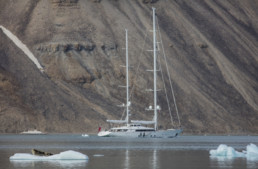
The only seal we saw on ice the entire trip
After a subsequent two and a half-day passage across Baffin Bay, we steamed into the Canadian Arctic at the Inuit hamlet of Pond Inlet on northern Baffin Island. Our entry into the polar desert, where annual precipitation ranges from 5 to 8 inches, immediately revealed an altogether different world than what we had seen of Greenland.
On the Canadian side, the severe and austere beauty dominated all else…but for the constant reminders of how much and how quickly elemental ways of life are changing. In the territory of Nunavut we saw much wildlife, visited four Inuit hamlets and hunting camps, and we covered over 1,000 miles in the heart of the Arctic archipelago. Last year was the planet’s hottest year on record, with resultant record-breaking ice loss, and while up north we saw virtually no sea ice. We could have easily completed the once impenetrable Northwest Passage had that been the goal.
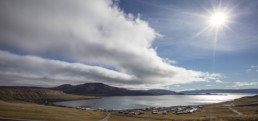
The Inuit hamlets were stark reminders of Maine island towns, but there was an air of impending doom about them. The residents are some of the nicest people I have ever met, yet the dire reality of climate change hung heavy about them. Theirs is fully a hunting culture, yet there is now fundamentally no hunting except in the winter when there is some ice. No ice equals no seals equals no food….for the Inuit, their dogs and for the bears. The loss of ice there is comparable to what the loss of fishing and lobstering would do to Maine’s fishing communities, except the devastation will be more complete in the Arctic as there are simply far fewer alternatives.
Critical lessons abound in the Arctic and now, having been there, I am compelled to sound the call for awareness, support of science and personal engagement. We ignore reality at our own peril….and that of all of our descendents.
The stunning beauty of Ilulissat’s Big Ice goes hand-in-hand with the reality that it is dying. My impression from the ground, the boat, and from the air was that, as New Englanders, we know the difference between healthy snow and ice fields, and the rotting, leaking, ugly vestiges we see come mud season…which was the inevitable comparison gleaned from what we saw.
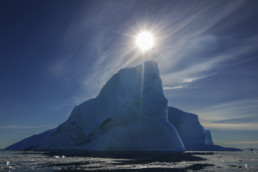
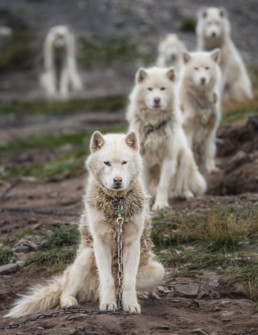
In 1995 there were some 8,000 sled dogs in Ilulissat, today there are approximately 2,000. This was the first sign we observed of the critical role ice plays in the daily life of the Inuit. Ilulissat’s mayor has said “The last time we had ice we could use was 1997,” and that diminishment of sea ice led to greatly decreased access to seals and fish. We learned that throughout the Arctic, hunters are being forced to shoot their dogs…a tragedy that cuts to the core of Inuit life. An early 18th century missionary to Greenland discovered that the native people had no word for bread so he translated the line from the Lord’s prayer as “Give us this day our daily seal.”
While in Arctic Bay, northern Baffin Island, I came upon this man tending his gillnets. In addition to the expected Arctic Char, he also caught four hefty Atlantic Salmon, a species never before seen in these parts. A month after returning back to Maine, I read an article that referred to Inuit “claims” that they were catching salmon there. It’s real, and it’s an extraordinary indicator of how fast these waters are warming and allowing new species to establish themselves.
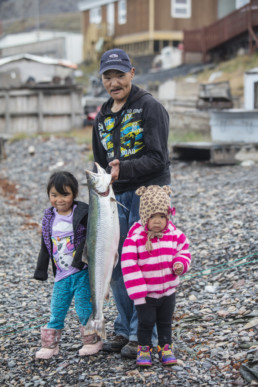
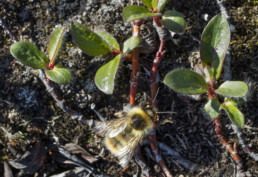
While tracking a musk ox on Devon Island, Nunavut, the world’s largest uninhabited island, at 74˚33’ N, I paused to photograph some of the exquisite and defiantly colorful little flowers that grow in this, the world’s harshest climate. To my complete amazement a slow-moving Arctic bumblebee, Bombus Polaris, lurched into my viewing screen. They are spreading their range further north as the Arctic warms.
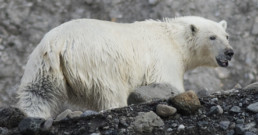
We saw thirteen Polar bears in Nunavut. These magnificent apex predators are impressive beyond words, yet with the loss of sea ice, they are unable to hunt seals and are thus increasingly starving. Compounding the threat to their existence is the Inuit need to survive by, among other resource-based enterprises, catering to wealthy hunters, as well as selling bear and other animal parts to the increasing number of tourists passing through the region.
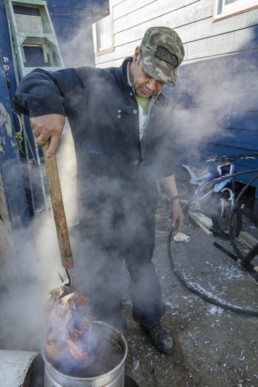
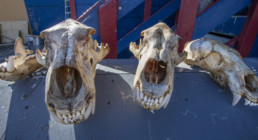
Every day in Nunavut was like steaming through the magnificence of the Grand Canyon, Yosemite and Monument Valley but I could never shake the awareness of impending loss and change.
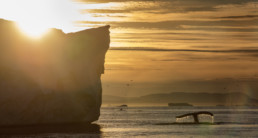
I implore you to view the extraordinary film, Chasing Ice, the most dramatic moments of which depict ice the size of Manhattan Island calving off the Jacobshavn. And please, read the October 24th New Yorker piece by Elizabeth Kolbert titled A Song of Ice – What Happens When a Country Starts to Melt. Both can be found online.
The day after the first public presentation of my Arctic images, someone sent me this excerpt of an extraordinary poem, Hieroglyphic Stairway, by Drew Dellinger… in my mind it is a call-to-awareness and action that really does say it all.
Climate change is not a Chinese hoax. Yet there is a “spiral of silence” around the subject insofar as most people rate it high among their personal concerns but do little or nothing. It simply isn’t sufficiently discussed, much less accorded the action it demands. There are important leaders who have publicly disavowed climate change which, in my mind, constitutes reckless endangerment on a scale the world has never before witnessed. What will you do?
– PMR


